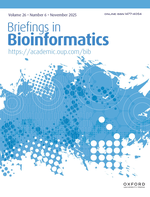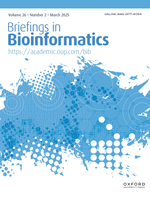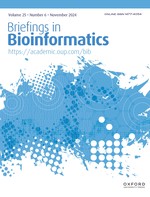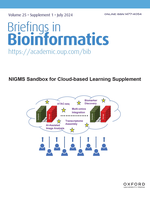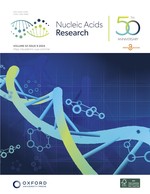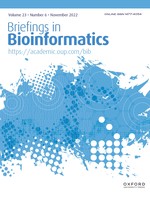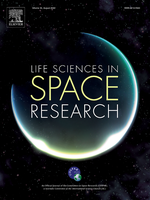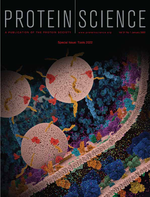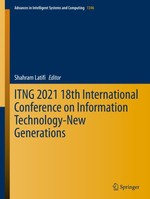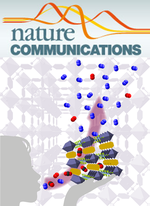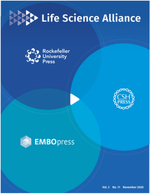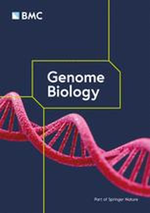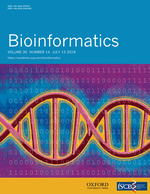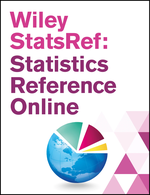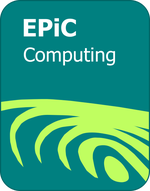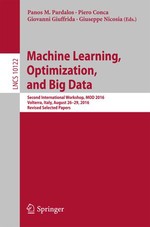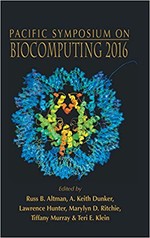DSCC: disease subtyping using spectral clustering and community detection from consensus networks
Dietary Iron Intake and Risk of Gastric Cancer
Plant-based Diet Index and Risk of Pancreatic Cancer: Findings from a Prospective Cohort Study
CytoAnalyst web platform facilitates comprehensive single cell RNA sequencing analysis
A comprehensive review of cancer survival prediction using multi-omics integration and clinical variables
Building Databases to Calibrate Alfalfa Crop Models: Paving the Way for an Advanced Yield Forecasting Tool
Identifying representative sequences of protein families using submodular optimization
Current approaches and outstanding challenges of functional annotation of metabolites: a comprehensive review
CCPA: cloud-based, self-learning modules for consensus pathway analysis using GO, KEGG and Reactome
SSA: a novel method for Single-cell and Spatial transcriptomics Alignment
RCPA: An Open-Source R Package for Data Processing, Differential Analysis, Consensus Pathway Analysis, and Visualization
Fourteen years of cellular deconvolution: methodology, applications, technical evaluation and outstanding challenges
Changing global epidemiology of chronic hepatitis C virus-related outcomes from 2010 to 2019: cirrhosis is the growing burden of hepatitis C virus-related disease
A novel approach for predicting upstream regulators (PURE) that affect gene expression
Acyltransferase families that act on thioesters: Sequences, structures, and mechanisms
Machine Learning Techniques for Cancer Subtype Discovery and Single-Cell RNA Sequencing Data Analysis
Cancer is an umbrella term that includes a range of disorders, from those that are aggressive and life-threatening to indolent lesions …
Novel Techniques for Single-cell RNA Sequencing Data Imputation and Clustering
Advances in single-cell technologies have shifted genomics research from the analysis of bulk tissues toward a comprehensive …
A call for standardized reporting of early-onset colorectal peritoneal metastases
Background The incidence of colorectal cancer (CRC) in patients under 50 years of age, i.e., early-onset CRC, has increased in the past …
A robust and accurate single-cell data trajectory inference method using ensemble pseudotime
Background
The advance in single-cell RNA sequencing technology has enhanced the analysis of cell development by profiling …
ViT-DeiT: An Ensemble Model for Breast Cancer Histopathological Images Classification
DWEN: A novel method for accurate estimation of cell type compositions from bulk data samples
A comprehensive survey of the approaches for pathway analysis using multi-omics data integration
A Crowdsourcing Approach to Develop Machine Learning Models to Quantify Radiographic Joint Damage in Rheumatoid Arthritis
Importance An automated, accurate method is needed for unbiased assessment quantifying accrual of joint space narrowing and erosions …
Mouse genomic associations with in vitro sensitivity to simulated space radiation
Quantitative proteomic analytic approaches to identify metabolic changes in the medial prefrontal cortex of rats exposed to space radiation
scCAN: single-cell clustering using autoencoder and network fusion
The Association between Serum Serine and Glycine and Related-Metabolites with Pancreatic Cancer in a Prospective Cohort Study
DrGA: cancer driver gene analysis in a simpler manner
Background
To date, cancer still is one of the leading causes of death worldwide, in which the cumulative of genes carrying mutations …
A novel method for single-cell data imputation using subspace regression
Provenance documentation to enable explainable and trustworthy AI: A literature review
Identification and Validation of a Novel Three Hub Long Noncoding RNAs With m6A Modification Signature in Low-Grade Gliomas
Thioesterase enzyme families: Functions, structures, and mechanisms
Single-cell RNA sequencing data imputation using similarity preserving network
scIDS: Single-cell Imputation by combining Deep autoencoder neural networks and Subspace regression
SMRT: Randomized Data Transformation for Cancer Subtyping and Big Data Analysis
Re-Identification of Patient Subgroups in Uveal Melanoma
Cell-to-cell and type-to-type heterogeneity of signaling networks: insights from the crowd
The association between diabetes and gastric cancer: results from the Stomach Cancer Pooling Project Consortium
Background
Prior epidemiologic studies on the association between diabetes and gastric cancer risk provided inconclusive findings, …
CPA: a web-based platform for consensus pathway analysis and interactive visualization
Single-Cell RNA Sequencing Data Imputation Using Deep Neural Network
Fast and precise single-cell data analysis using a hierarchical autoencoder
Disease subtyping using community detection from consensus networks
Analysis of Short-read Aligners using Genome Sequence Complexity
Multi-Omics Analysis Detects Novel Prognostic Subgroups of Breast Cancer
Gene selection for optimal prediction of cell position in tissues from single-cell transcriptomics data
A comprehensive survey of regulatory network inference methods using single-cell RNA sequencing data
A Novel Method for Cancer Subtyping and Risk Prediction Using Consensus Factor Analysis
NBIA: a network-based integrative analysis framework – applied to pathway analysis
Integrated Cancer Subtyping using Heterogeneous Genome-Scale Molecular Datasets
RIA: a novel Regression-based Imputation Approach for single-cell RNA sequencing
Identifying Significantly Impacted Pathways: A Comprehensive Review and Assessment
Background
Many high-throughput experiments compare two phenotypes such as disease vs. healthy, with the goal of understanding the …
GSMA: an approach to identify robust global and test Gene Signatures using Meta-Analysis
Motivation: Recent advances in biomedical research have made massive amount of transcriptomic data available in public repositories …
Community assessment to advance computational prediction of cancer drug combinations in a pharmacogenomic screen
R Tutorial: Detection of Differentially Interacting Chromatin Regions From Multiple Hi-C Datasets
Functional analysis tools for post‐translational modification: a post‐translational modification database for analysis of proteins and metabolic pathways
Statistical Software
A comprehensive survey of tools and software for active subnetwork identification
Orthogonal approach to integrate independent omic data
A Multi-Cohort and Multi-Omics Meta-Analysis Framework to Identify Network-Based Gene Signatures
Robust Fuzzy Cluster Ensemble on Cancer Gene Expression Data
MIA: Multi-cohort Integrated Analysis for Biomarker Identification
PINSPlus: A tool for tumor subtype discovery in integrated genomic data
Network‐Based Approaches for Pathway Level Analysis
A survey of the approaches for identifying differential methylation using bisulfite sequencing data.
A Systems Biology Approach for Unsupervised Clustering of High-Dimensional Data
MicroRNA-augmented pathways (mirAP) and their applications to pathway analysis and disease subtyping
TOMAS: A novel TOpology-aware Meta-Analysis approach applied to System biology
PINS: A Perturbation Clustering Approach for Data Integration and Disease Subtyping
A novel approach for data integration and disease subtyping
Overcoming the matched-sample bottleneck: an orthogonal approach to integrate omic data
DANUBE: Data-Driven Meta-ANalysis Using UnBiased Empirical Distributions—Applied to Biological Pathway Analysis
A novel bi-level meta-analysis approach: applied to biological pathway analysis
Motivation: The accumulation of high-throughput data in public repositories creates a pressing need for integrative analysis of …
